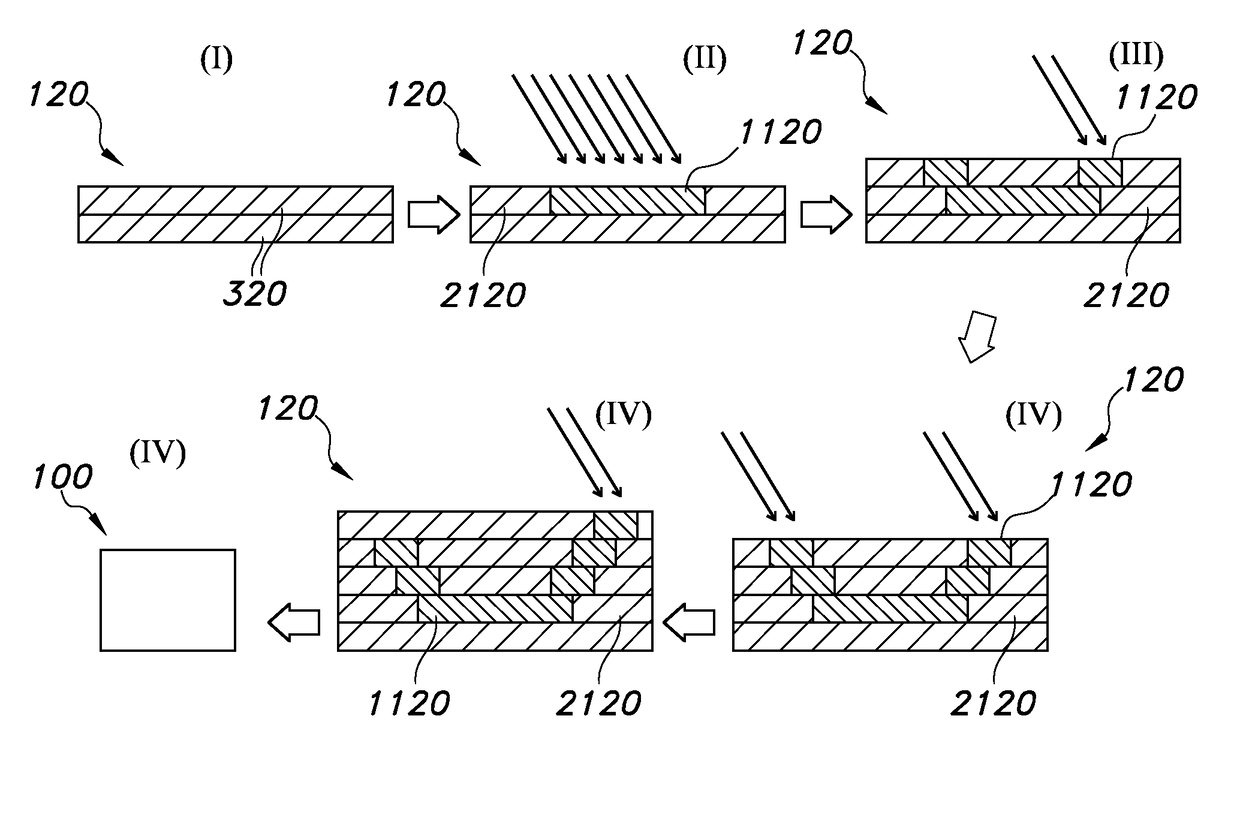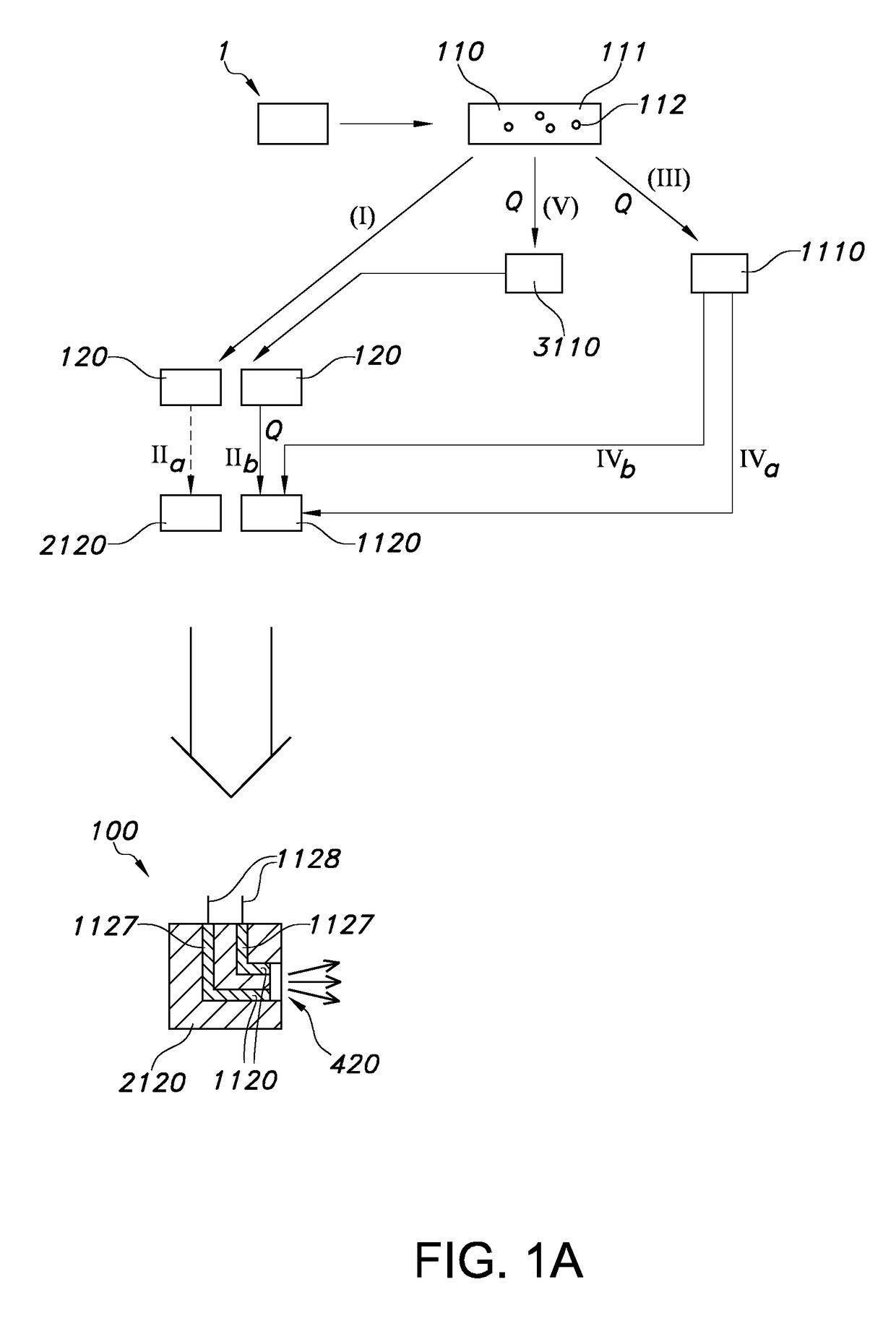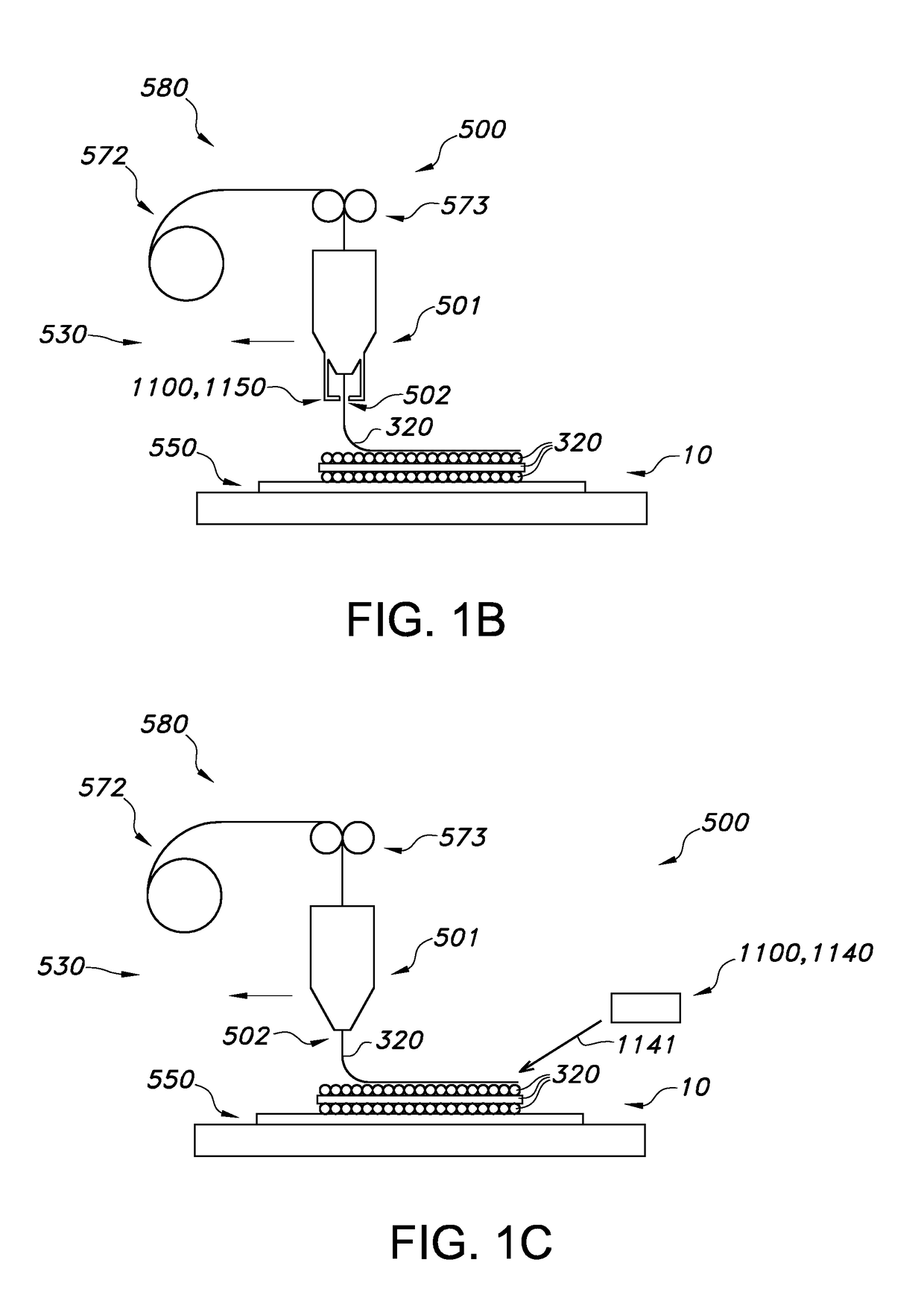3D printing of graphene (OXIDE) composites
- Summary
- Abstract
- Description
- Claims
- Application Information
AI Technical Summary
Benefits of technology
Problems solved by technology
Method used
Image
Examples
Embodiment Construction
[0052]FIG. 1a schematically depicts possible process stages of a method for printing a 3D printed object 100. As indicated above, the 3D printed object 100 comprises a first type of printed material 1120 having electrically conductive properties and a second type of printed material 2120 having electrically insulating properties. To obtain such object 100, a method may be used comprising providing printable material 110, wherein the printable material 110 has electrically insulating properties and wherein the printable material 110 is convertible by heat to a material 1110,1120 having electrically conductive properties.
[0053]Hence, the method includes providing printable material 110. Subsequently, with a 3D printer 500 said printable material 110 may be printed, to generate printed material 120. During the act of generating the printed material 120 or after having generated the printed material 120, the printable material 110 or printed material 120 may be subjected to heat. Hence,...
PUM
| Property | Measurement | Unit |
|---|---|---|
| Electrical conductivity | aaaaa | aaaaa |
| Electrical conductivity | aaaaa | aaaaa |
| Electrical conductivity | aaaaa | aaaaa |
Abstract
Description
Claims
Application Information
 Login to View More
Login to View More - R&D
- Intellectual Property
- Life Sciences
- Materials
- Tech Scout
- Unparalleled Data Quality
- Higher Quality Content
- 60% Fewer Hallucinations
Browse by: Latest US Patents, China's latest patents, Technical Efficacy Thesaurus, Application Domain, Technology Topic, Popular Technical Reports.
© 2025 PatSnap. All rights reserved.Legal|Privacy policy|Modern Slavery Act Transparency Statement|Sitemap|About US| Contact US: help@patsnap.com



